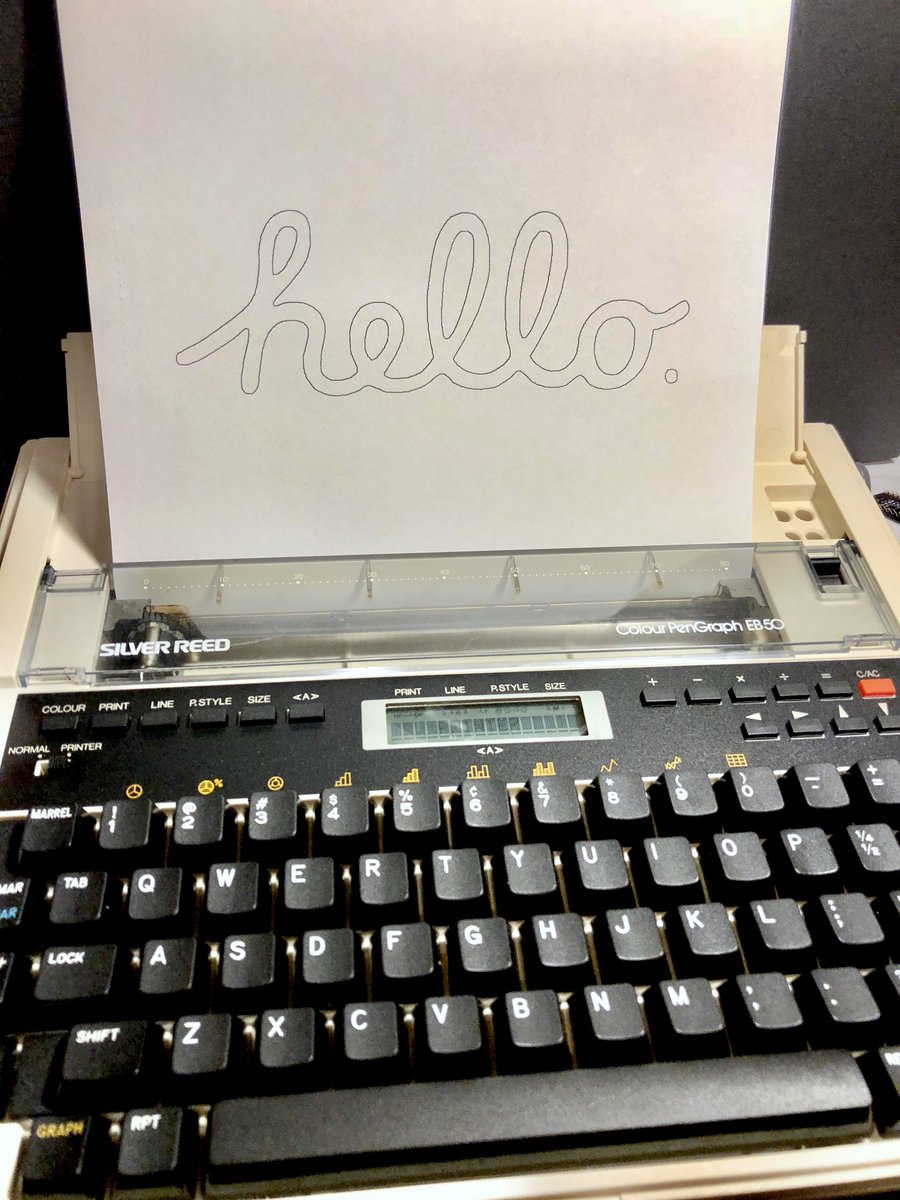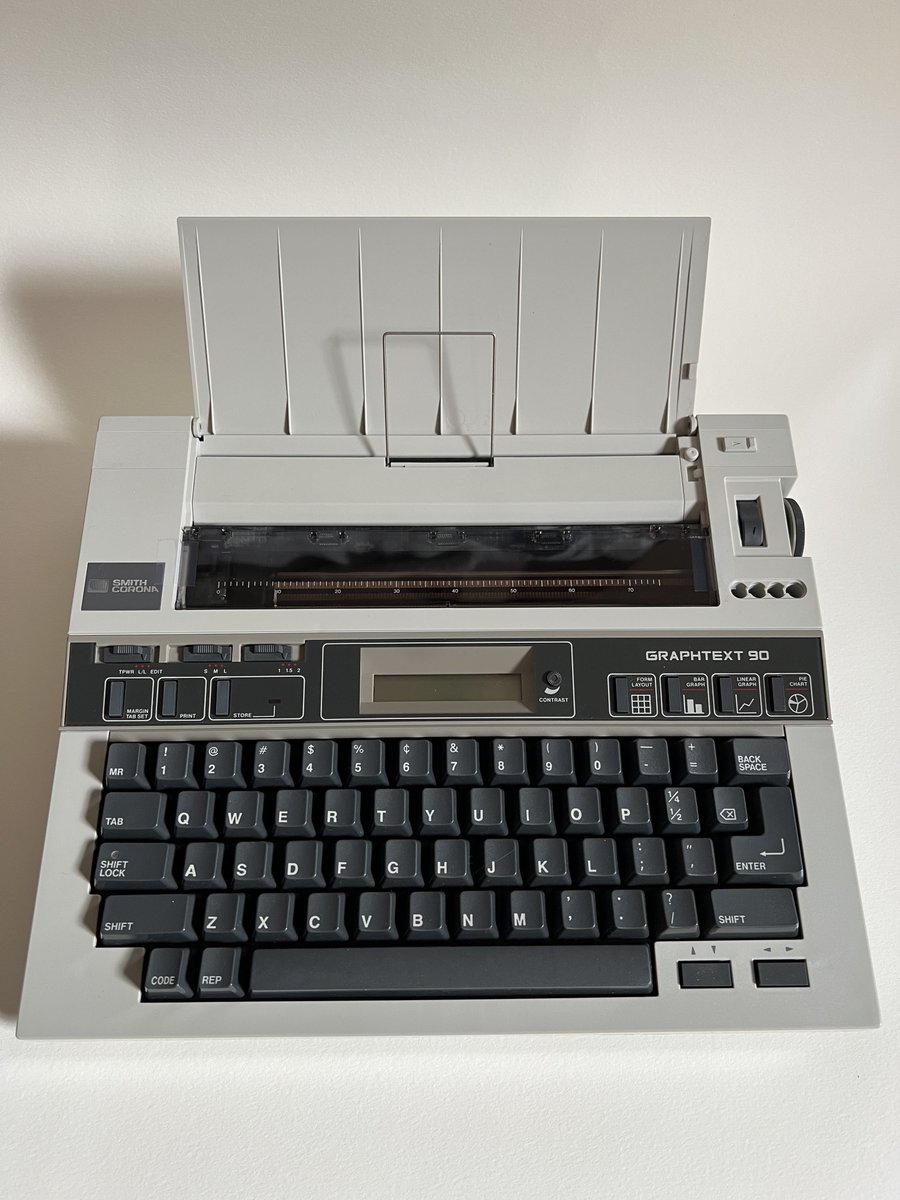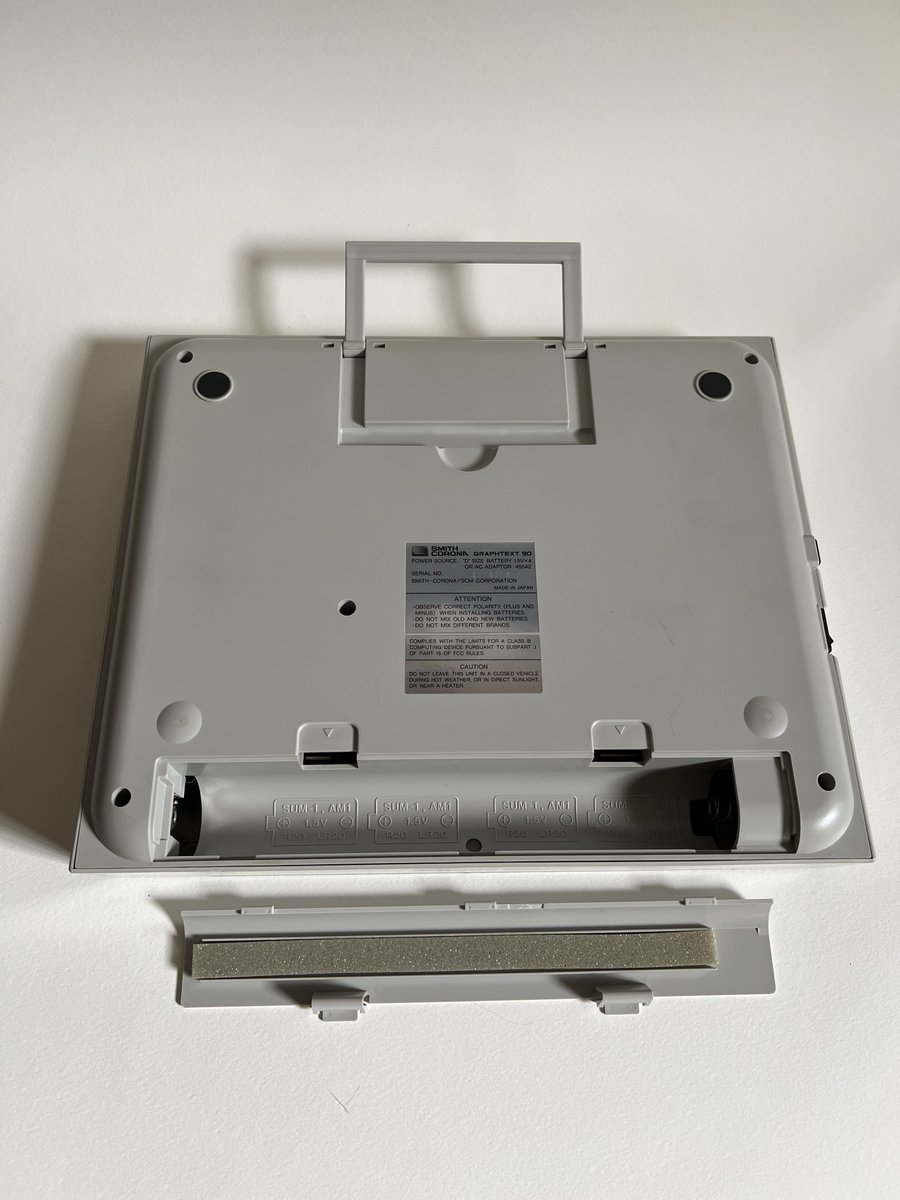Did you know there were typewriters that used ball point pens to draw not just text but also graphics? I’ve collected several of these over the years. Thread: 🧵 #plottertwitter #RetroComputing




Panasonic made three models. The top shelf was the RK-P400C Penwriter which included the RS-232 port built in for computer control. They also came with a white pen for error correcting.
https://twitter.com/paulrickards/status/1289747959454801925
With computer control, the typewriter come act like a pen plotter. I scanned the RK-P400C manual: archive.org/details/panaso…
https://twitter.com/paulrickards/status/1289899321387671553
A lower end model was the Panasonic RK-P440 Penwriter. It had a computer input but required the K100 external interface. Otherwise functionally the same.
https://twitter.com/paulrickards/status/1231591753158995969
Panasonic also had the basic RK-P200C Penwriter which removed any computer control but kept the ability to do standalone business graphics. Pic from eBay. 

Silver Reed made the EB50 Color Graph. It also had business graphics capability along with computer control via parallel.
https://twitter.com/paulrickards/status/1233005798957121536
Not to be left out, Brother offered the Type-a-Graph BP-30. Pics from eBay— there’s a lot of these for sale. 





Even Sears got into the game with the LXI Type-O-Graph (by likely rebranding the Brother Type-a-Graph, they look the same). Mine has a flaw in the print head mechanism. 





There was even a calculator that had a smaller pen plotter mechanism built into them.
https://twitter.com/paulrickards/status/1344419943866101763
Many small computers in the 1980s also had plotters available like the Commodore 1520 and the Atari 1020. They used 4” wide paper and the same pens. 



Some “slabtops” had built in pen plotters like the Casio PB-700, Radio Shack Tandy PC-2, and Sharp PC-2500. 





All of the typewriter models used the same ball point pens in four colors (black, red, green, blue) and were portable with a built-in handle and could run on batteries. They also likely all used the same plotter mechanisms made by Alps. 



The pens are rather scarce now, mostly all that remains are NOS (new old stock) with some exceptions for a couple of German companies that make replacements for medical equipment that fit. 

These pen typewriters were sold during the mid 1980s. In PC World magazine July 1985, the Panasonic RK-P400C retailed for $350. 





Videos of these typewriter plotters in action
https://twitter.com/paulrickards/status/1289756434532413440
Videos of these typewriter plotters in action
https://twitter.com/paulrickards/status/1233165228617142279
Video of the Panasonic RK-P440C typewriter plotting the demonstration page which includes a mixture of text and graphs in COLOR 🖊
https://twitter.com/paulrickards/status/1231716802738216960
• • •
Missing some Tweet in this thread? You can try to
force a refresh






























